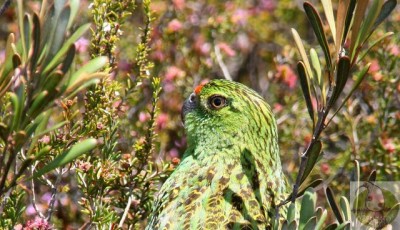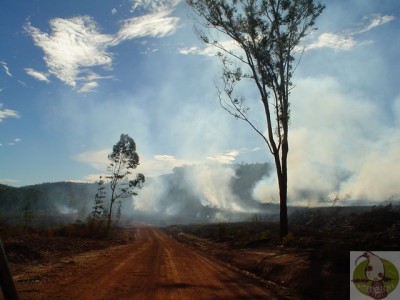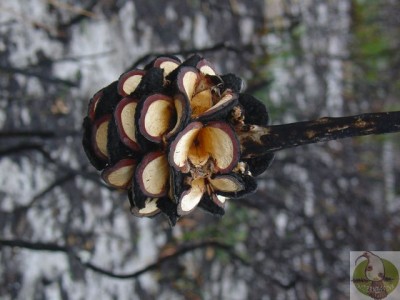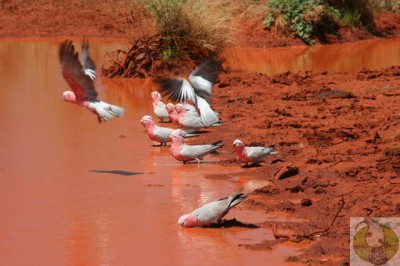Let us explore further the response of parrot populations to environmental factors such as climate (incl. change), predation, vegetation (food) and habitat loss. Already we know that Kakapo require a very specific event to initiate breeding, but there are populations of parrots with much more complex requirements. These relate to a vector of change that is neither predictable nor controllable. I’m talking about fire or more specifically bush-wildfire. Fire is an essential part of the Australian ecosystem and is a very complex beast. Many plants in the Australian outback need the presence of fire in order to germinate, often these plants require the heat to open their seed pods. Typically these trees have a very thick bark layer which can withstand the searing heat and, surprisingly, accelerate fire by emitting flammable oils from their crown (particularly gum trees). Small shrubs and orchids grow from root stock that is safely deposited in the ground ready to sprout once the fire has destroyed all shade plants.
As such it is expected that at least some parrots have learned to take advantage of this post-fire growth. One such specialist is the Western Ground Parrot (Pezoporus wallicus flaviventrs). A resident of the arid land that occupies a narrow strip on the south coast of Western Australia, particularly Cape Arid and Fitzgerald River National Parks. You can read all about this bird in PsittaScene Volume 20 #3 where it has pride and place on the front cover, You will be hearing more about our friend the Western Ground Parrot in the future because they are a particular favorite of mine. However for now we will discuss what has influenced fire events over Australia’s history.

Historically fire were driven by the climate and other environmental factors such as vegetation-age and land topography. Fire was typically initiated by lightning strike which is a common event in October on the south-coast. These fires where patchy and formed a mozaic of burnt area. Old growth bordering recently burnt which in turn bordered recovering vegetation. As a result no fire event could exterminate all vegetation, as there was always large patches of vegetation too young to be re-burnt (<5yrs). The Aboriginal people of Australia operated in much the same way with their ‘fire stick’ tradition, introducing fire to areas they travelled through and using it to flush out animals for food. Each time a fire was set it would run with the wind until the humidity increased or the wind changed or a ‘south-west weather change’ brought rain. Consequently long strips of burnt vegetation protected chunks of old growth in an almost natural arrangement. Early europeans disrupted the balance only because their tried-and-true practices of Europe where not matched to the complexity of Australian bush. total exclusion of fire was not a good option in the long term. The accumulation of dead wood (aka fuel load) increased with time and the resulting fires burned too long and too hot thus exterminating even the most resilient plants.
When I lived in South-west Australia we could have as many as 8 bush fires at once all started by lightning and in all forms of topography from high stone hills to low sand dunes. Recently management practices have changed dramatically and now West Australia has some of the best fire management operations in Australia. But did this change come too late for our little friend the Western Ground Parrot?



































